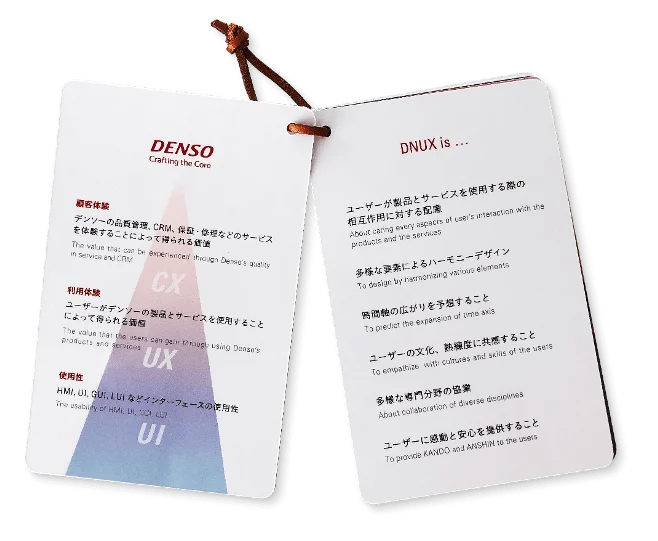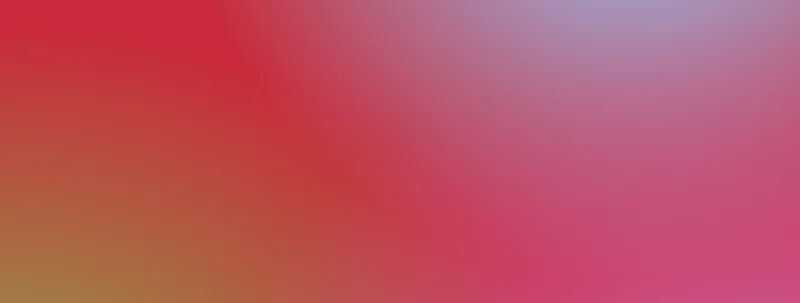Did you find this article helpful for what you want to achieve, learn, or to expand your possibilities? Share your feelings with our editorial team.


Jul 02, 2021
TECH & DESIGNQ&A Session: DENSO Dives into the Power of User Experience& how it’s Driving Change in Future Mobility
UX development rooted in individual emotional experiences
-
崔 晋海(Jinhae Choi)
Before joining in 2018, Jinhai Choi worked at an overseas manufacturing company in UX development and company-wide UX management operations for home appliances, IT and services. From 2013 to 2015, he studied UX at Yonsei University Graduate School in South Korea while also teaching as a professor. In 2014, he won an award in the “Interaction and User Experience” category at the Red Dot Design Award Grand Prix, which is one of the world’s top three design competitions.
-
CEO & producer at HEART CATCH Inc.Interviewer: Mariko Nishimura
She founded the company in 2014 after working in multiple positions, including as an IT engineer at IBM Japan and field marketing manager at Adobe Systems. Her work at HEART CATCH, centering on technologies from Japan and other parts of the world, involves consulting and production work aimed at providing new value and experiences.
The auto industry is going through a once-in-a-century transformation as it rapidly moves to meet societal needs. In response, DENSO is transforming itself from a supplier of automotive components to a company that delivers new value to society that goes beyond the traditional mobility industry. As a company with deep technological strengths that produces unique products for the global market, DENSO is already beginning to realize this change. In 2018, the company established the User Experience (UX) Innovation Center to pursue value for end users rooted in experience, which plays a pivotal role in developing software at DENSO.
UX Innovation Center leader Jinhai Choi is a true expert in the UX field, with more than 100 patents and research papers published on the topic. Seeking answers to the questions of what makes mobility UX development important and what DENSO hopes to realize through UX, Mariko Nishimura, CEO and producer of HEART CATCH Inc., sat down to talk with Choi.
Contents of this article
Emotional Experiences Are What Move People
Nishimura: Mr. Choi, I understand that the DENSO UX team pursues UX development rooted in the idea of emotional experiences. Why did you decide on this approach?
Choi: In recent years, we’ve been shifting our main focus from customer convenience and cost performance to the concept of emotional experiences, which are based on user desires. Our approach to UX involves thinking about what moves the end user on an emotional level from day to day, and what emotional experiences in mobility we should pursue to achieve more innovative UX development. We refer to this approach as “KANDO UX,” with “KANDO” being the Japanese word for “emotional.” This requires an understanding of, and insight into, the inner workings of human beings.

Nishimura: Your idea of focusing primarily on human emotion is fascinating. Please tell me more about your research activities and development approach.
Choi: When talking about the value of an experience, it’s important to not only understand what the user values, but also to understand their emotional aspirations as well as the necessary structuring of the experience in response. Therefore, in addition to standard problem-solving methods, we use DENSO’s proprietary KANDO UX approach, which looks at the inner workings of people in order to develop concepts. For us, nothing is more important than figuring out how we can harmonize with these underlying factors in each user.

Nishimura: What kinds of things have you come to understand by focusing so strongly on people’s inner workings as a part of UX development?
Choi: Our global-scale pursuit of KANDO UX, research has revealed just how many different kinds of things can trigger emotionally moving moments in different people. Previously, we carried out a study in Japan and China to determine which types of experiences move people in an emotional way when using an automated driving vehicle. The results showed that Japanese participants mainly sought out rest and relaxation through activities such as sleeping or simply taking a break, whereas Chinese participants strongly wanted more active things such as using WeChat and playing video games.
Even when analyzing this topic by individual nation and culture, there are many different factors tied to emotional experiences, so it’s important to think of each user individually when pursuing development concepts.
Nishimura: So you’re saying that it’s only natural that personalization is important when attempting to tailor experiences to individual users’ emotions?
Choi: That’s right. Also, it’s important to remember that the things people desire change over time, which is why we are committed to continuous, thorough research on end users. That study I mentioned in Japan and China was carried out a year and a half ago, and I think if we did it again today the results would be different. The Covid-19 crisis in particular, has transformed people’s lives and the things they want in terms of mobility, so continuous research is important.
Also, we must always remember that end users are constantly changing based on conditions in society and their environments. That’s why we focus on the future, continuing our UX research in a deep-reaching, comprehensive manner.

The Turning Point That Changed Mr. Choi
Nishimura: The wider shift toward strongly focusing on UX has occurred in just the past few years, but you personally have been researching UX for a long time now. What initially made you so interested in this topic?
Choi: My fascination with UX began during my student days, when I was studying subjects like interface design and human factors engineering. The role of design in industrial products began to change greatly when people started consuming intangible, rather than just physical things. Around this time I became interested in what makes certain designs feel good or pleasant, rather than focusing on flashy or attractive designs.
Also, this was when the “timelessness” of human-centered research really became appealing to me, and even today my go-to book for human factors engineering is one from the 1950s. Consider, for example, that the size of a person’s palm or their general field of vision has remained unchanged since then. Even though technologies have advanced greatly over the years, the basic factors at people’s cores remain the same.
The field of UX requires a rational kind of persuasiveness, and I feel that these fundamental facets of human beings are universal and perpetually unchanging.
Nishimura: I understand that, before coming to DENSO, you worked on UX development in fields including IT equipment and services at an overseas home appliances manufacturer. Was there a specific turning point in your career?
Choi: The major turning point for me was my time working on display interface designs. Working with a variety of touchscreen and gesture-based interfaces in relation to consumer activities forced me to think about things I hadn’t considered much before.
In addition to framework design, I worked on multi-mode interactions, which involve actions combining gestures and sounds, as well as the development of technologies related to complex combinations of body positions and movements. My work in this area sparked my interest in the mobility industry.
The auto industry is currently transitioning from selling physical things to selling services instead, and I feel that UX development is a crucial part of this. It’s an area that holds unlimited potential, and that’s why I decided to join DENSO.

The Value of Mobility-based Experiences to Society
Nishimura: After joining DENSO, you created the UX-focused team of development specialists known as the UX Innovation Center. What type of group is this?
Choi: The mission of DENSO’s UX Innovation Center’s is to make us the global leader in mobility UX. Our group develops DENSO’s UX strategies, and also collaborates on joint projects and advanced development efforts with our some of our automaker customers. Currently, we’re working on cockpit system UX for automobiles, which is an important point of contact between the vehicle and driver.
Our head office is in Nihonbashi, Japan, but we also have locations in Michigan and Los Angeles, California, as well as at the DENSO Headquarters in Kariya, Aichi Prefecture.
A wide array of specialized knowledge is required for UX development, so our staff come from diverse backgrounds. Some people, like me, are from design science, while others are from fields and educational backgrounds including industrial design, interaction design, cognitive science, software engineering, information systems, big data, physics, and even the humanities.

Nishimura: You have a diverse range of employees! What areas do you focus on most during the development process?
Choi: Typical product manufacturing processes start from planning and then move on to design, production, and quality control, with each stage usually handled by a different specialized department or division. With UX development, however, the same people are involved in every step, from planning through delivery to the end user. Therefore, DENSO has introduced, as our standard in this field, a UX-based development process that covers everything from upstream processes through to mass production.
Feedback following the product launch is also important, so we’re working on a framework that can reflect it in future designs to help improve products. This is vital for good UX development.
Nishimura: So UX research never really ends, because it’s important to keep making continual improvements. What do you plan to focus on in future?
Choi: We talked a bit about personalization already, and my current team is interested in the idea of ultra-personalization. Basically, this means that we combine big data comprised of people’s habits and actions with detected information of vehicle driving environments, and then analyze them to make personally tailored designs.
Take, for example, the driver’s seat interface system, which is a tough aspect of car design. This assumes the driver performs multiple, simultaneous actions while dealing with a constantly changing environment—the driver is controlling the steering wheel while opening and closing the windows, checking the rear-view mirror, and operating various buttons and switches, all while reacting to changes in road conditions and navigating obstacles on all sides. We’re trying to integrate all of these in research that connects with individual emotional experiences.
We’re also aiming to deliver not only safety, but peace of mind to our users, which is something DENSO cannot achieve alone. Therefore, we hope to actively collaborate on development and production projects with other automakers, smart city frameworks and so forth in order to deliver new value to users in line with their views and needs.
Nishimura: Before we wrap things up, I’d like to hear your thoughts on the future of mobility and UX development.
Choi: Working in the auto industry requires one to think in the medium- to long-term, over a span of about five years for each project. For me, this is quite different from my previous experience as a developer in areas such as home appliances and IT equipment. With vehicles, focusing too much on the short term or getting too caught up in trends can take away a development project’s sense of direction. By integrating a research approach like KANDO UX to look at the true qualities at people’s cores, it is possible to develop deeper insights.
These days, London and other major urban centers in Europe are tackling environmental issues by turning entire parts of cities into pedestrian-only zones. When projects like this are complete, people will begin to view the act of riding in a car itself as something uncommon and unique. This shows us that views on cars, mobility and so forth change along with society itself. I hope DENSO will respond to such changes by leveraging their wide-reaching, comprehensive strengths while ensuring the best UX possible.
Going forward, I want to keep exploring ways in which movement-based experiences fit into the overall narrative of our future society and environmental issues.
Author:BUSINESS INSIDER JAPAN
COMMENT
Changing your "Can'ts" into "Cans"
Where Knowledge and People Gather.

